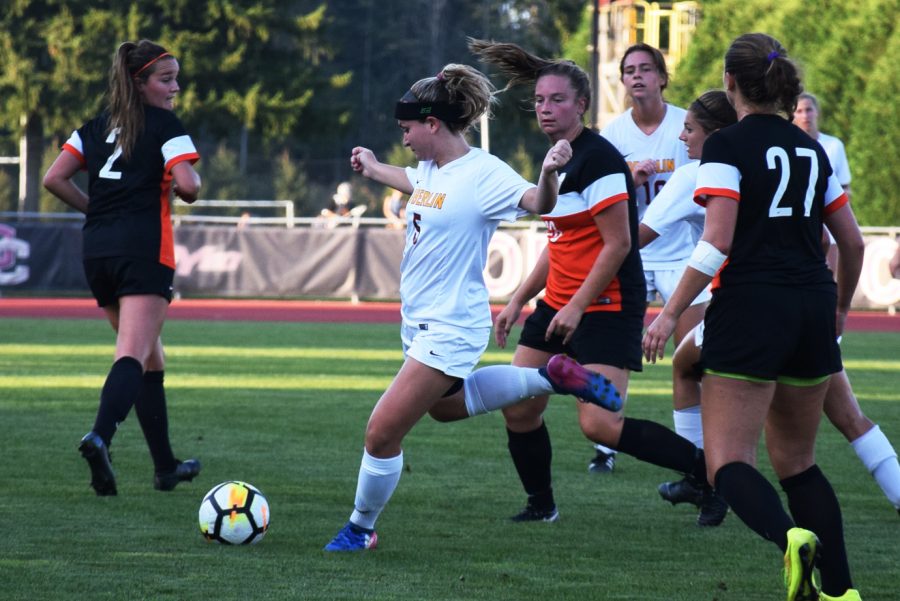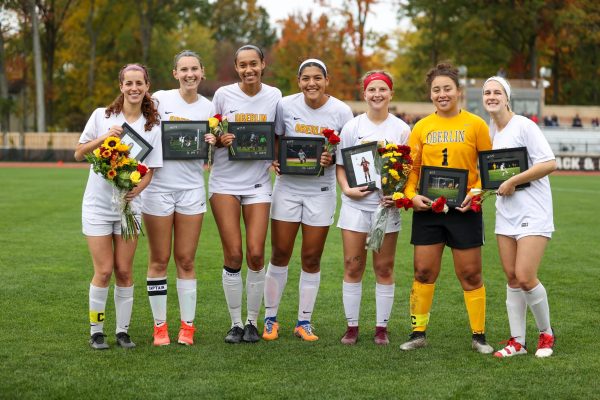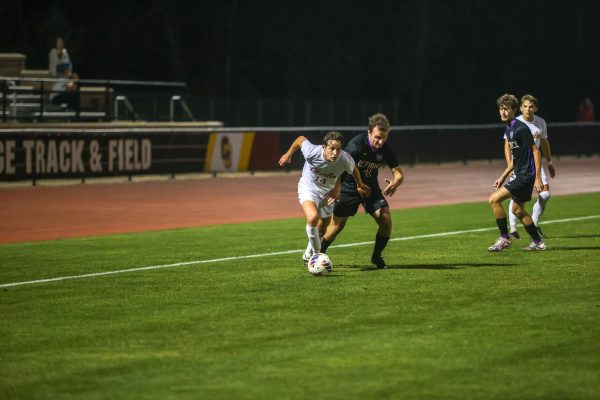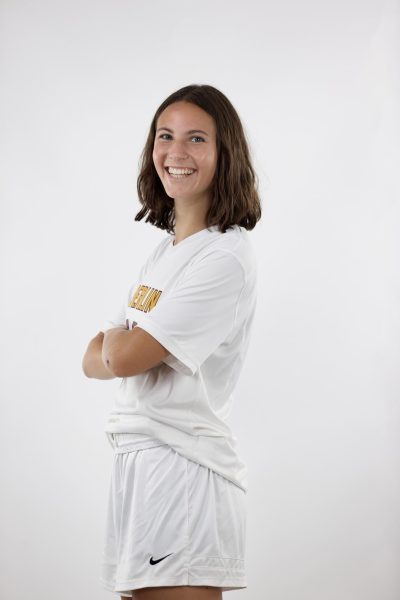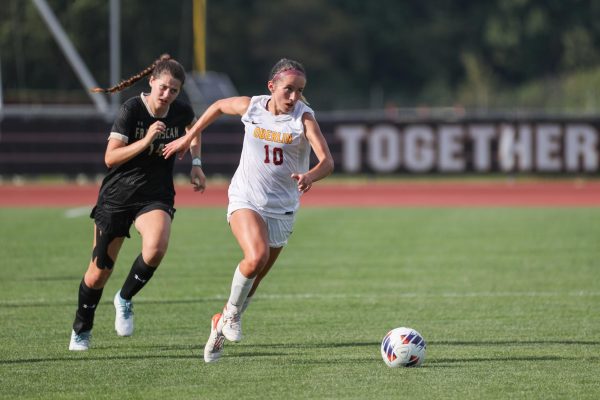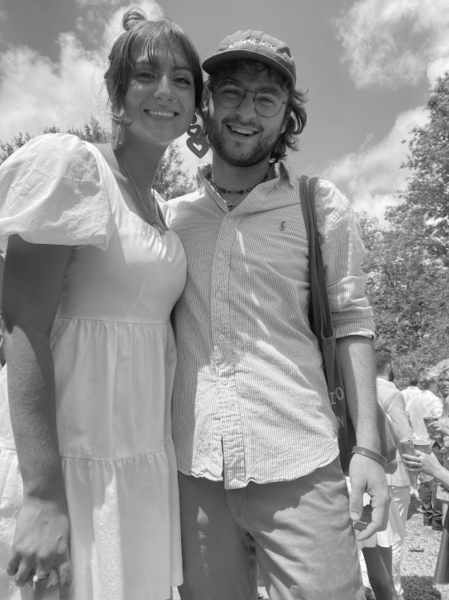More Than Just ‘Sore’
After eight years of chronic back pain, junior midfielder Jackie Brant was diagnosed with ankylosing spondylitis last spring. After months away from the game, she scored her first goal of the season Sept. 12 against Geneva College — her first game back in nearly a year.
I have been dealing with chronic back pain since I was 12. It started as an annoying pinching feeling that I’d notice every once in a while. Eventually, this developed into a constant stabbing pain and extreme stiffness; it would wake me up at night and make sitting for long periods of time unbearable. Oddly enough, the pain was worse after long periods of inactivity — this often made sitting through class and getting up in the morning extremely painful.
During this time, I continued playing club soccer. In the beginning, I could deal with the pain with Advil; eventually though, Advil started to have no effect. I’ve been playing soccer since I was four years old, so I was determined to push through whatever was wrong with my back. The various doctors I saw simply chalked my symptoms up to intense physical activity and gave me the same series of useless exercises and stretches. I knew that something was wrong with my body, but no one could come up with any answers for me. Chronic back pain was just a reality I was forced to accept at that point.
I reached a breaking point in my second year of college. The pain had me routinely in tears; some days it was unbearable. I could see my performance in soccer starting to slip, and I felt like I couldn’t do anything about it. I continued my exercises and stretches to no avail. Finally, in the spring, I scheduled an appointment with a rheumatologist at the Cleveland Clinic.
Eight years after my first symptoms arose, I was finally diagnosed with an autoimmune disease called ankylosing spondylitis. AS is a progressive form of arthritis, in which spinal joints become inflamed, causing pain and discomfort that worsens over time. If left untreated, the inflammation can lead to spinal fusion and complete spinal immobility. Although AS is a fairly common disease, it often goes undiagnosed for long periods of time. In fact, the average length of time it takes people to get diagnosed starting from the first sign of symptoms is six years.
In some ways, I was relieved to finally have an answer. After all these years, all my random, seemingly unconnected symptoms made sense, and I finally had a doctor who believed that my back pain was serious and not just normal back pain resulting from competitive sports.
However, sadness quickly set it. I was worried about what this would mean for my future mobility, and what it would mean for my soccer career at Oberlin. My doctor told me that he would not tell me I could not continue playing soccer, nor would he even recommend that I stop. However, he did say that if it were his child with AS, he would strongly discourage them from playing competitive sports. I did some further research online, and it was equally discouraging. One person even commented, “I would forget about competitive sports, as you will be totally frustrated with your not being at a level remotely competitive.”
Despite this, I decided I would do my best to continue playing soccer at Oberlin. After taking the spring season off, I began a treatment over the summer that was supposed to alleviate most of my symptoms in about three months — just in time for the start of my junior year preseason. However, I knew that despite the new medication, there was still a very real possibility that my back could keep me from being as competitive as I wanted to be, and that it could stop me from playing altogether.
After a bumpy first couple weeks of preseason and regular season, last week I finally played in my first competitive match since last October. Stepping onto the field again when I thought I might never be able to has been one of my biggest achievements at Oberlin so far. I have a renewed sense of appreciation for this sport that I have loved for 16 years. I have learned to appreciate and be proud of what my body can do and accept the things that it can’t. Every time I set foot onto the field, whether in practice or in a game, I now know that I am always capable of putting my best effort in for myself and for my team — something that I haven’t been able to say since my back pain started.
I am eternally grateful for my parents who believed in me when no one else did, and who have supported all the decisions I’ve made surrounding my health. Though they may worry about me playing soccer with AS, they still watch every game they can, and I know they are happy to see me continuing to pursue my passion.
I am also extremely lucky to have such a strong support system in my athletic family. My coaches and athletic trainers have been the most understanding and supportive group I could have hoped for. They push me to play to the best of my ability while also making sure that I listen to my body when it needs a break. Most importantly, when my future as a player was in question, they made sure that I felt like a valued member of the team, whether I was able to physically play or not.
And finally, this whole process has shown me how lucky I am to be a part of the women’s soccer family. Playing collegiate soccer is rewarding in a lot of different ways, but one of the most special things about it is that we learn to support and rely on each other, both on and off the field. My teammates have been involved in this whole process since the beginning, whether it be offering to go to doctor appointments with me, checking up on my progress in the summer, or running the fitness test with me. I know that I would not be the person or the player that I am today without them.


